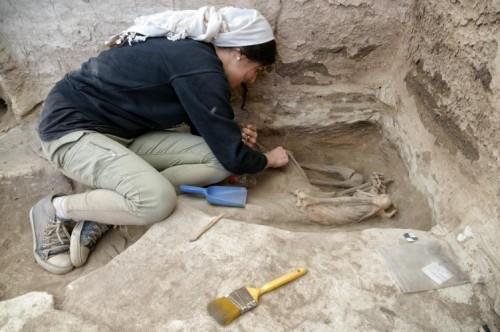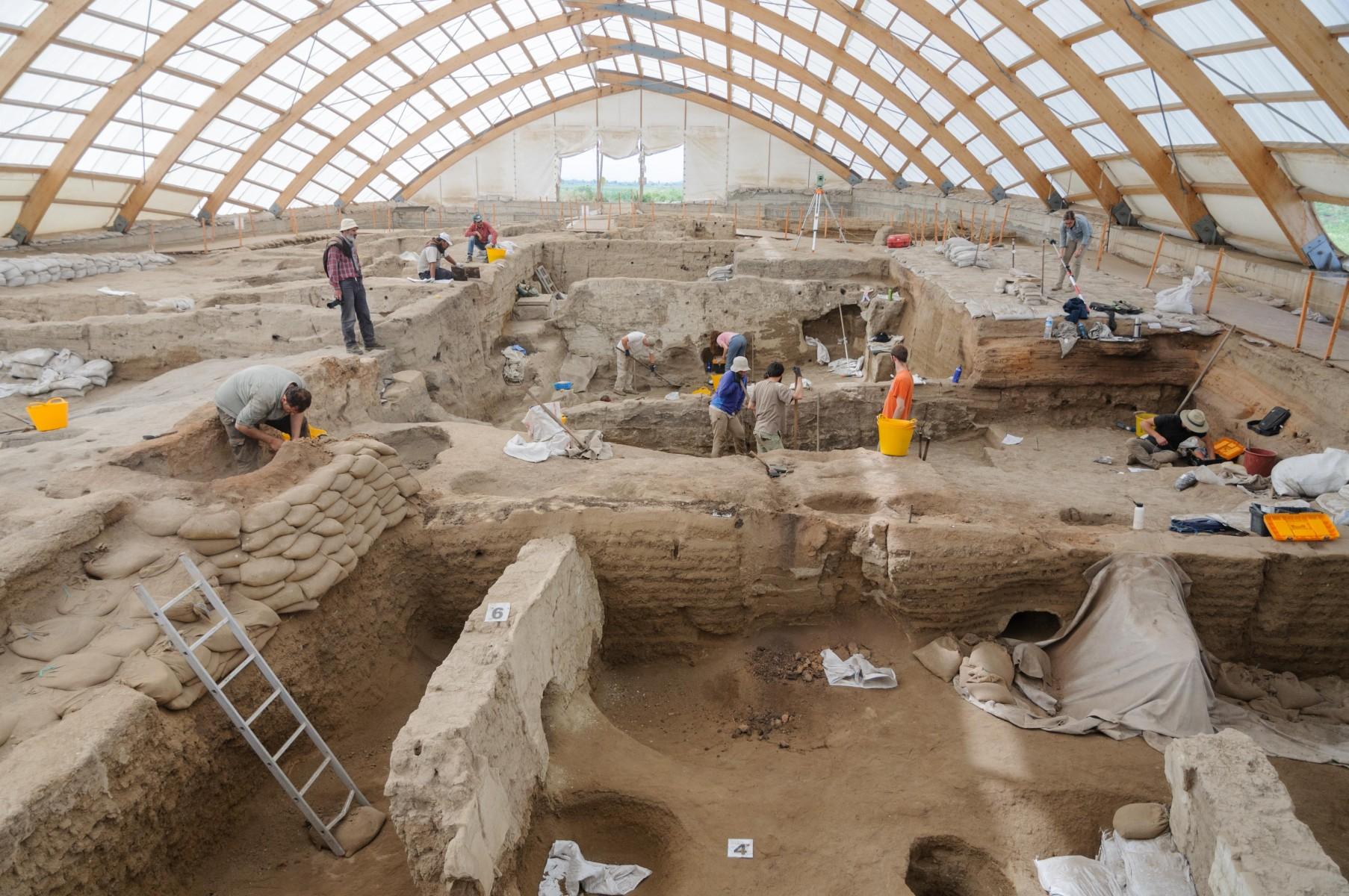Some 9,000 years ago, residents of a large farming community were also among the first humans to experience some of the perils of modern urban living. Scientists studying the ancient ruins of Çatalhöyük, in modern Turkey, found that its inhabitants — 3,500 to 8,000 people at its peak — experienced such modern urban problems as overcrowding, infectious diseases, violence, and environmental problems.
In a paper published in the Proceedings of the National Academy of Sciences, an international team of bioarchaeologists reported new findings built on 25 years of study of human remains unearthed at Çatalhöyük.
The results paint a picture of what it was like for humans to move from a nomadic hunting and gathering lifestyle to a more sedentary life built around agriculture, said Clark Spencer Larsen, lead author of the study, and professor of anthropology at The Ohio State University, adding:
“Çatalhöyük was one of the first proto-urban communities in the world and the residents experienced what happens when you put many people together in a small area for an extended time.
“It set the stage for where we are today and the challenges we face in urban living.”
The Çatalhöyük community
Çatalhöyük, in what is now south-central Turkey, was inhabited from about 7100 to 5950 B.C. First excavated in 1958, the site measures 13 hectares (about 32 acres) with nearly 21 meters of deposits spanning 1,150 years of continuous occupation.
Larsen, who began fieldwork at the site in 2004, was one of the leaders of the team that studied human remains as part of the larger Çatalhöyük Research Project, directed by Ian Hodder of Stanford University. A co-author of the PNAS paper, Christopher Knüsel of Université de Bordeaux in France, was co-leader of the bioarchaeology team with Larsen.
Fieldwork at Çatalhöyük ended in 2017 and the PNAS paper represents the culmination of the bioarchaeology work at the site, Larsen said. Çatalhöyük began as a small settlement about 7100 B.C., likely consisting of a few mud-brick houses in what researchers call the Early period.

It grew to its peak in the Middle period of 6700 to 6500 B.C., before the population declined rapidly in the Late period. Çatalhöyük was abandoned about 5950 B.C. Farming was always a major part of life in the community.
The researchers analyzed a chemical signature in the bones — called stable carbon isotope ratios — to determine that residents ate a diet heavy in wheat, barley, and rye, along with a range of non-domesticated plants.
Stable nitrogen isotope ratios were used to document protein in their diets, which came from sheep, goats, and non-domesticated animals. Domesticated cattle were introduced in the Late period, but sheep were always the most important domesticated animal in their diets. Larsen said:
“They were farming and keeping animals as soon as they set up the community, but they were intensifying their efforts as the population expanded.”
Urban problems begin to set in
The grain-heavy diet meant that some residents soon developed tooth decay — one of the so-called “diseases of civilization,” Larsen said. Results showed that about 10 to 13 percent of the teeth of adults found at the site showed evidence of dental cavities.
Changes over time in the shape of leg bone cross-sections showed that community members in the Late period of Çatalhöyük walked significantly more than early residents. That suggests residents had to move farming and grazing further from the community as time went on, Larsen said, adding:
“We believe that environmental degradation and climate change forced community members to move further away from the settlement to farm and to find supplies like firewood.
“That contributed to the ultimate demise of Çatalhöyük.”
Other research suggests that the climate in the Middle East became drier over the course of Çatalhöyük’s history, which made farming more difficult. Findings from the new study suggest that residents suffered from a high infection rate, most likely due to crowding and poor hygiene. Up to one-third of remains from the Early period show evidence of infections on their bones.
During its peak in population, houses were built like apartments with no space between them — residents came and left through ladders to the roofs of the houses. Excavations showed that interior walls and floors were re-plastered many times with clay.

While the residents kept their floors mostly debris-free, analysis of house walls and floors showed traces of animal and human fecal matter. Larsen said:
“They are living in very crowded conditions, with trash pits and animal pens right next to some of their homes. So there is a whole host of sanitation issues that could contribute to the spread of infectious diseases.”
The crowded conditions in Çatalhöyük may have also contributed to high levels of violence between residents, according to the researchers. In a sample of 93 skulls from Çatalhöyük, more than one-fourth — 25 individuals — showed evidence of healed fractures. And 12 of them had been victimized more than once, with two to five injuries over a period of time.
The shape of the lesions suggested that blows to the head from hard, round objects caused them — and clay balls of the right size and shape were also found at the site. More than half of the victims were women (13 women, 10 men). Most of the injuries were on the top or back of their heads, suggesting the victims were not facing their assailants when struck. Larsen said:
“We found an increase in cranial injuries during the Middle period, when the population was largest and most dense.
“An argument could be made that overcrowding led to elevated stress and conflict within the community.”
Most people were buried in pits that had been dug into the floors of houses, and researchers believe they were interred under the homes in which they lived. That led to an unexpected finding: Most members of a household were not biologically related.
Researchers discovered this when they found that the teeth of individuals buried under the same house weren’t as similar as would be expected if they were kin. Larsen said:
“The morphology of teeth is highly genetically controlled.
“People who are related show similar variations in the crowns of their teeth and we didn’t find that in people buried in the same houses.”
More research is needed to determine the relations of people who lived together in Çatalhöyük, he said, adding:
“It is still kind of a mystery.”
Overall, Larsen said the significance of Çatalhöyük is that it was one of the first Neolithic “mega-sites” in the world built around agriculture, saying:
“We can learn about the immediate origins of our lives today, how we are organized into communities. Many of the challenges we have today are the same ones they had in Çatalhöyük — only magnified.”
Provided by: Jeff Grabmeier, The Ohio State University [Note: Materials may be edited for content and length.]







